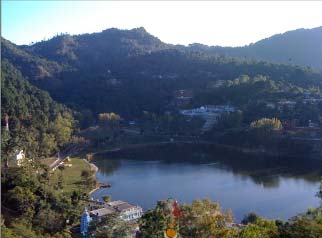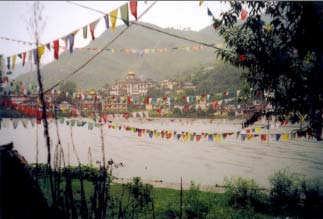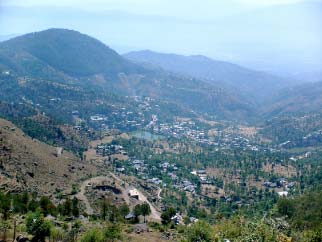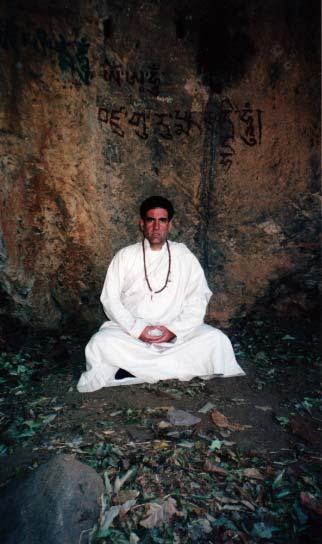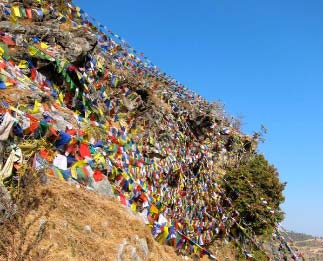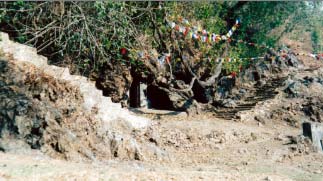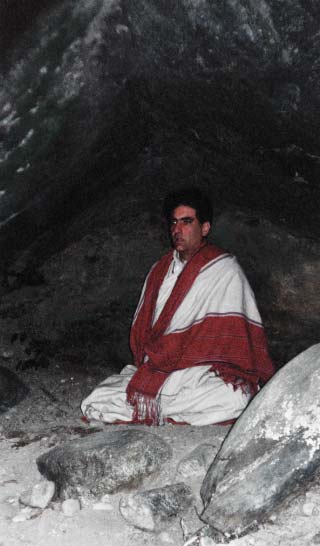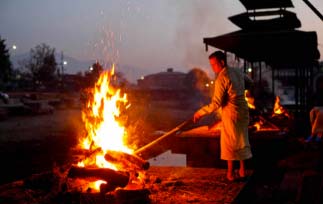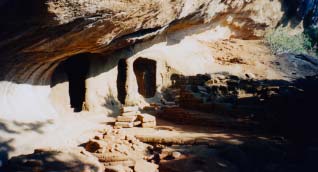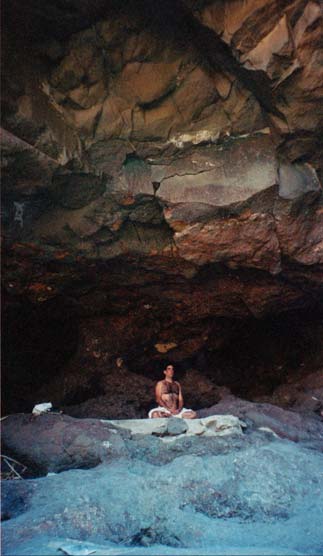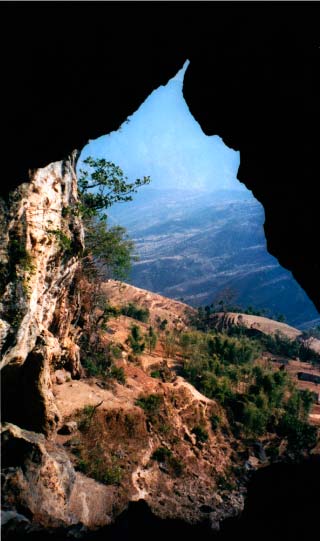photos
Click on a photo for a larger version, click again for the largest. Right-click or Control-click to download …
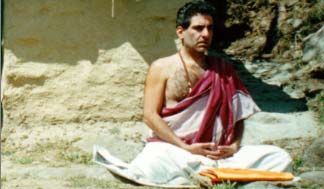
On retreat, outside of my cave in the mountain behind Tso Pema, India.
Tso Pema means Lotus Lake. This is where Padmasambhava (Guru Rinpoche) arose on a lotus in the middle of the lake after he and Princess Mandarava were burned alive by the king because of their consorting.* There are 10 or 12 yogis (naljorpa in Tibetan) who live in caves there. Some of which have been on life-long retreat for more than 40 years. Tso Pema is the Tibetan name for Rewalsar. Rewalsar is a small town and a rural area in Mandi district in the Indian state of Himachal Pradesh. The local name for Rewalsar is Trisangam.
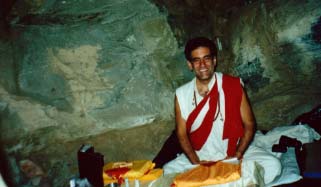
On retreat, inside of my cave in the mountain behind Tso Pema, India.
*As it says in A Great Treasure of Blessings: Returning to Zahor, Padmasambhava took the royal princess Mandarava as his consort, and they then went to the Maratika cave (see photos below), where for three months they practised the sadhana of longevity. The Buddha of Limitless Life, Amitayus appeared, empowered them with longevity, and blessed them as inseparable from him. They both accomplished the second vidyadhara level, mastery over life.
The king of Zahor and his ministers arrested Guru Rinpoche and Mandarava and burned him alive, but he transformed the pyre into a lake, and was found sitting on a lotus blossom in its centre. Overcome with remorse, and in homage, the king offered Padmasambhava his entire kingdom, beginning with his garments and his five royal robes.
It was from Tso Pema that Padmasambhava went to Tibet to spread Vajrayana Buddhism.
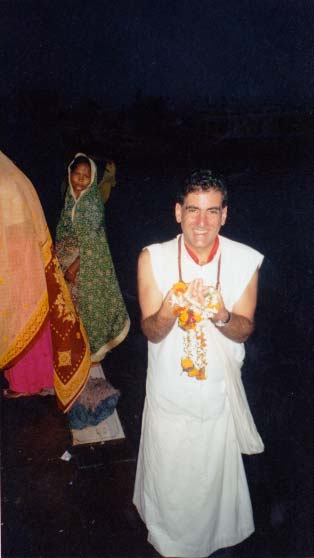
On the Ganga (Ganges) in Varanasi (Benares) at night. The Ganga is the most sacred river to Hindus, worshipped as a goddes. The spiritual capital of India, Varanasi is the holiest of the seven sacred cities (Sapta Puri) in Hinduism and Jainism, and has played an important role in the development of Buddhism.
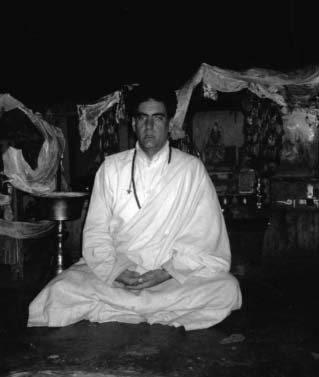
On retreat inside of Tagphug Senge Dzong – Tiger Cave, Lion Fortress – in Yolmo, Nepal. Tagphug Senge Dzong is one of the 6 “very secret caves in high places” of the great 11th century Tibetan yogi-saint, Jetsun Milarepa. Yolmo is in the Helambu region of the Himalayas close to the Tibetan border.
Sent from Tibet by his guru, Marpa The Translator, Jetsun Milarepa meditated in this cave for three years.

The shrine inside of Tagphug Senge Dzong – Tiger Cave, Lion Fortress – in Yolmo, Nepal. Tagphug Senge Dzong is one of the 6 “very secret caves in high places” of the great 11th century Tibetan yogi-saint, Jetsun Milarepa. Yolmo is in the Helambu region of the Himalayas close to the Tibetan border.
Sent from Tibet by his guru, Marpa The Translator, Jetsun Milarepa meditated in this cave for three years.
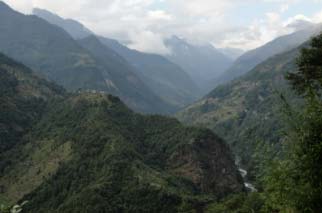
The Yolmo valley in the Eastern Himalayas of Northern Nepal
This area is known as Helumbu to the Nepalese and is almost directly north of Kathmandu Valley, just inside Nepal but bordering on Tibet. It, is known as the Hidden Valley In the Hundred Thousand Songs of Milarepa and it is said that Marpa told Mila “This place was prophesied in the Avatamsaka Sutra (by the Buddha), so you should go there and meditate.” It is a place visited and blessed by Guru Rinpoche, Yeshe Tsogyal, Marpa, Mila and many other yogis and yoginis.
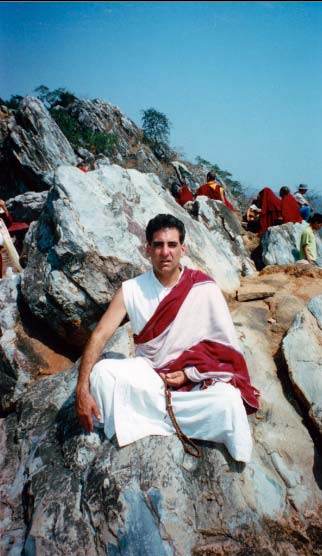
At Vulture Peak (Pali: Gijjhakuta, sanskrit : Gṛdhrakūṭa) located in Rajgir, Bihar, India.
Here, sixteen years after his enlightenment, to an assembly of 5,000 monks, nuns and laity, as well as innumerable bodhisattvas, Lord Buddha gave the definitive teaching of the second turning of the wheel of Dharma called the Prajnaparamita Sutra, in English known as The Sutra Of The Heart Of Transcendent Wisdom or The Heart Sutra.
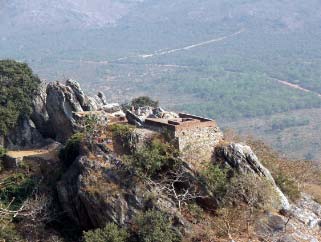
Vulture Peak (Pali: Gijjhakuta, Sanskrit: Gṛdhrakūṭa) located in Rajgir, Bihar, India
The central teaching of the second turning of the wheel of dharma reveals as the true nature of reality, the intrinsic emptiness of all phenomenon. Śūnyatā in Pali, this is called anutpada in Sanskrit and translated into English as having no origin, non-production, not coming into existence or unborn.
As it says in the Prajnaparamita Sutra,
“Form is emptiness; emptiness also is form. Emptiness is no other than form; form is no other than emptiness. In the same way, feeling, perception, formation, and consciousness are emptiness.”
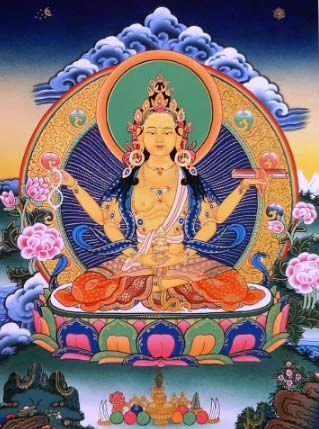
Prajnaparamita – The Great Mother
The personification of The Perfection Of Wisdom teachings in Mahayana practice is known as “The Great Mother” (Tibetan: Yum Chenmo).
The Heart Sutra ends with perhaps the best know mantra in the world:
“Gate gate pāragate pārasaṃgate bodhi svāhā!”
Gone, Gone, Gone beyond, Gone completely beyond. Fully awakened! Just so!
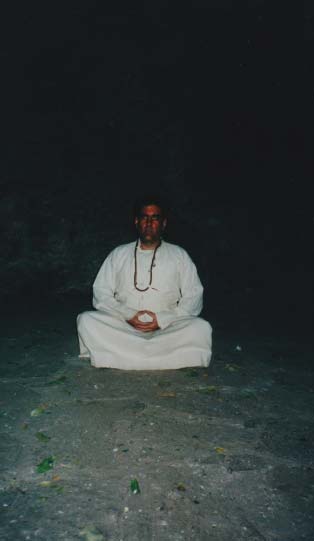
On retreat inside the lower cave at Maratika, Nepal
Maratika, also known as Haleshi, is located in the Khotang District in Nepal, about 185 km south west of Mount Everest. In this place, Mandarava and Padmasambhava attained the Vidyadhara of longevity.

On retreat inside the lower cave at Maratika, Nepal
The lower cave at Maratika is very large, being a hollowed out mountain with a hole at the top ringed by trees. After walking up a mildy inclined entrance way, one enters a very large chamber filled with hundreds or thousands of bats. At the far end of this, there’s a natural plateau of about 100′ x 50′ where I’d sit and practice each day.
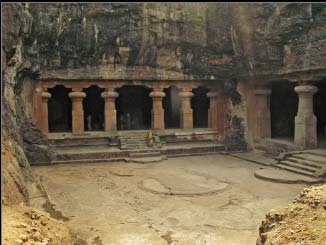
Elephanta caves are a network of sculpted caves located on Elephanta Island, or Gharapuri (literally “the city of caves”) in Mumbai Harbour, 10 kilometres (6.2 mi) to the east of the city of Mumbai in the Indian state of Maharashtra. In back of this complex, there are a series of more modest caves, probably used as monks cells between 2000 and 2300 years ago, where I stayed on retreat.

